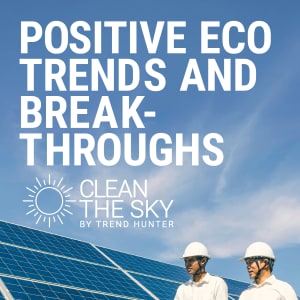Reimagined Ecclesiastical Architecture – The Ørestad Church Was Designed by Henning Larsen (TrendHunter.com)

The Ørestad Church Was Designed by Henning Larsen
The Ørestad Church, Copenhagen’s first newly built church in over three decades, represents a reimagining of traditional ecclesiastical architecture with a focus on inclusivity and environmental consciousness. Designed to serve as both a place of worship and a broader community hub, the project challenges conventional perceptions of religious spaces by integrating elements that invite engagement from all residents, regardless of faith or background. By incorporating research on modern spirituality and local attitudes toward churches, the modern ecclesiastical architecture ensures that the building functions as a welcoming, multi-purpose gathering place rather than an institution solely for worshippers.
Sustainability is a defining feature of the project, with timber serving as the primary material and tree scrap shingles forming the façade. This environmentally mindful approach not only minimizes waste but also enhances the sensory experience of the space.
Image Credit: Henning Larsen
Trend Themes
1. Inclusive Religious Spaces – Architectural designs are evolving to create sacred spaces that serve diverse community functions beyond traditional religious practices.
2. Sustainable Architectural Materials – The use of eco-friendly materials like timber and recycled elements in building construction is gaining traction, focusing on reducing environmental impact.
3. Multi-purpose Worship Facilities – Religious buildings are being reimagined as versatile community hubs, blending spiritual activities with social and cultural engagement.
4. Rethinking Church Design – Modern churches are prioritizing concepts like open spaces and communal integration to better reflect contemporary spiritual and societal values.
Industry Implications
1. Architecture and Design – The industry is witnessing a trend towards environmentally responsible and socially inclusive building practices in religious construction.
2. Sustainable Materials – A growing demand for eco-friendly construction materials drives innovation in sourcing and utilizing renewable resources effectively.
3. Community Engagement Services – An increased focus on community-oriented spaces within religious environments provides opportunities for services that foster broader social interaction.
4. Urban Planning and Development – Transforming religious sites into community-inclusive spaces intersects with urban development strategies aimed at enhancing neighborhood utility.
February 4, 2025 at 07:46PM
https://ift.tt/c9mJWuY
